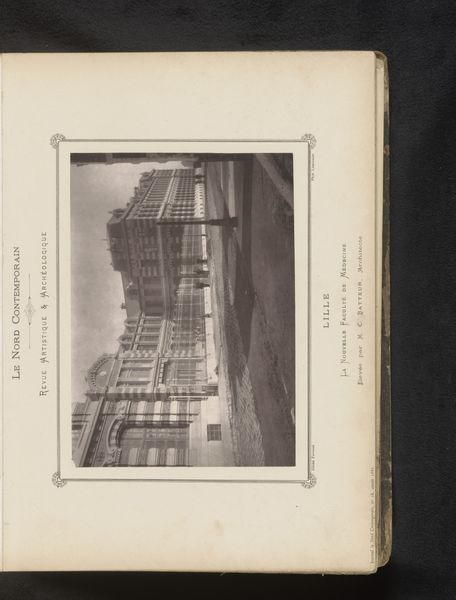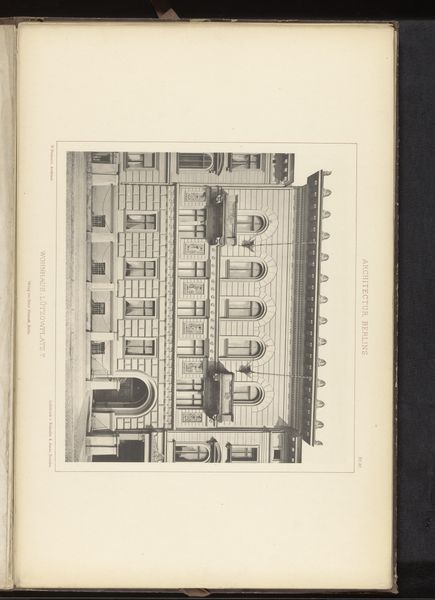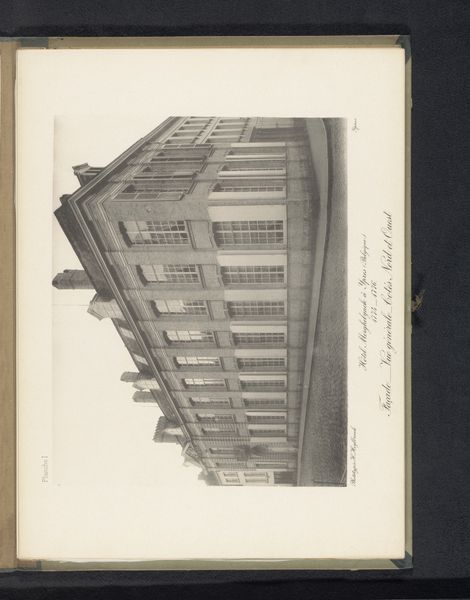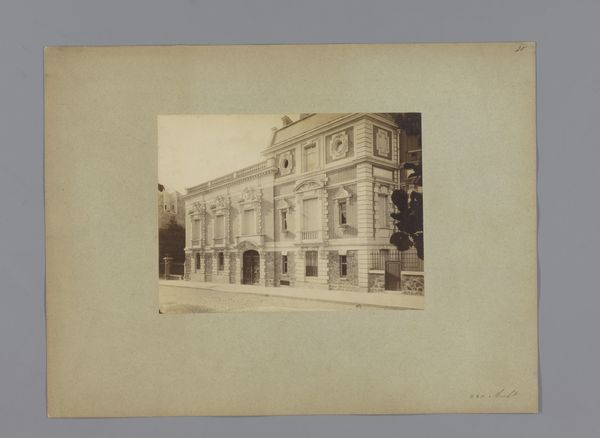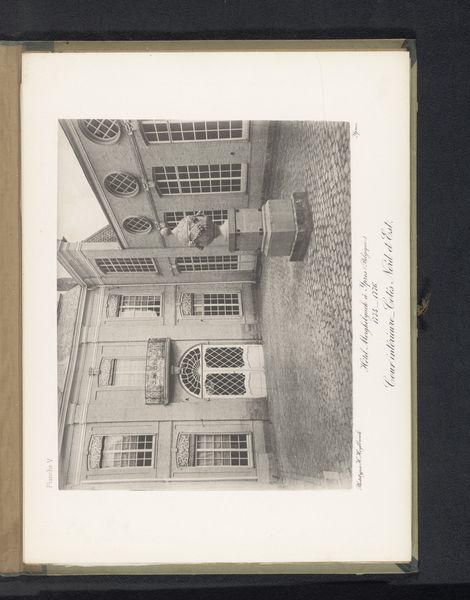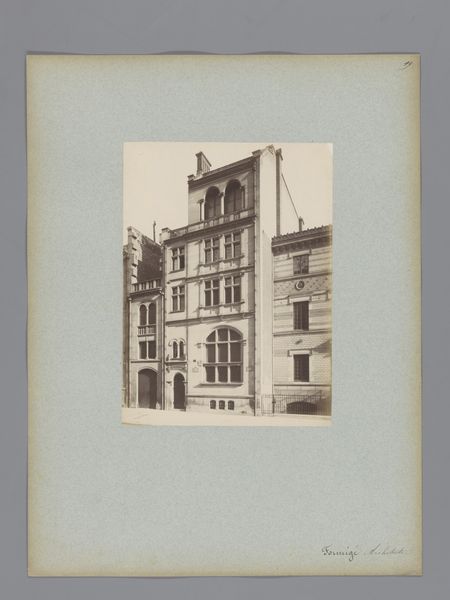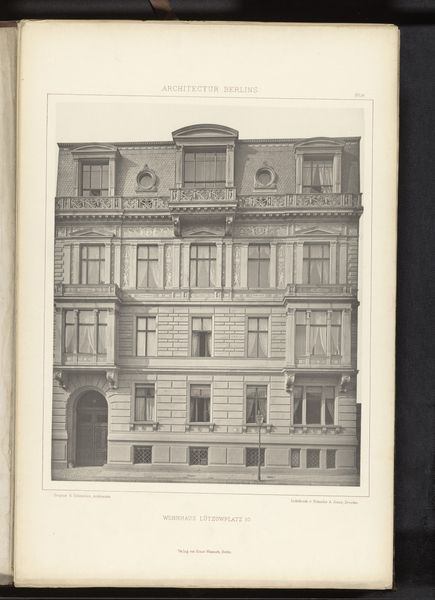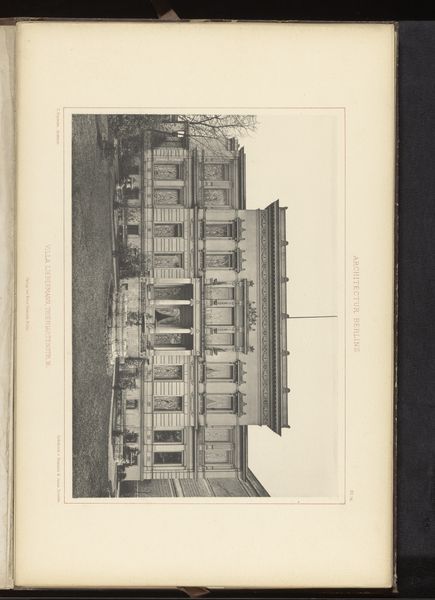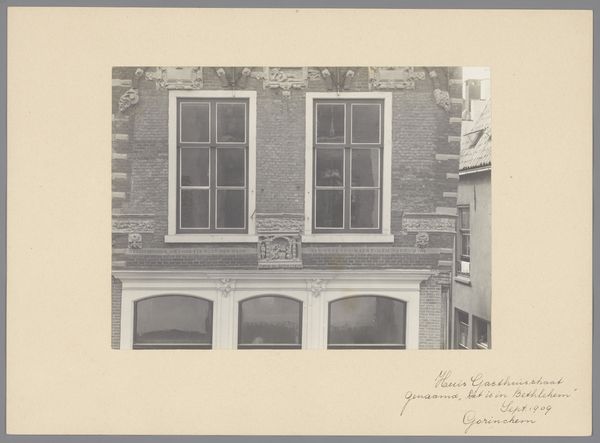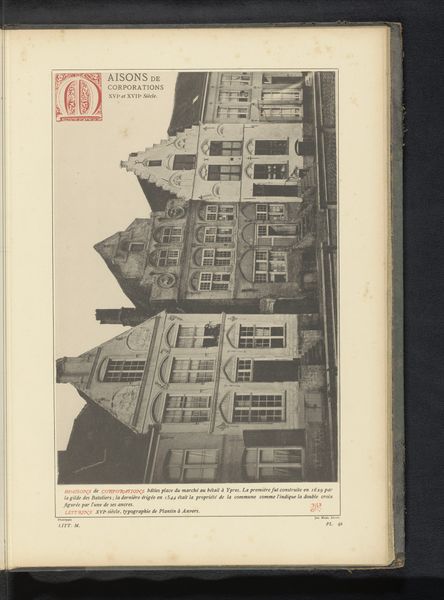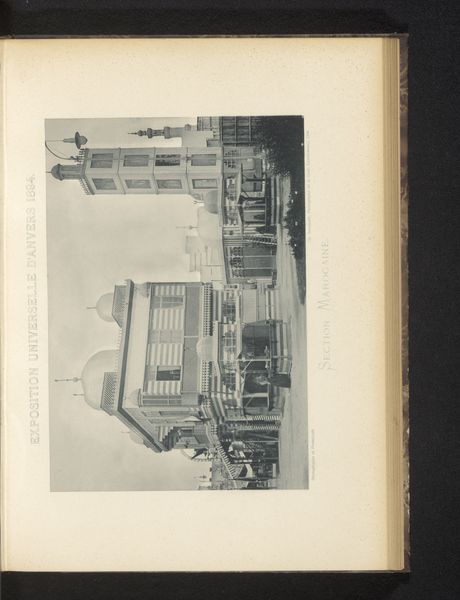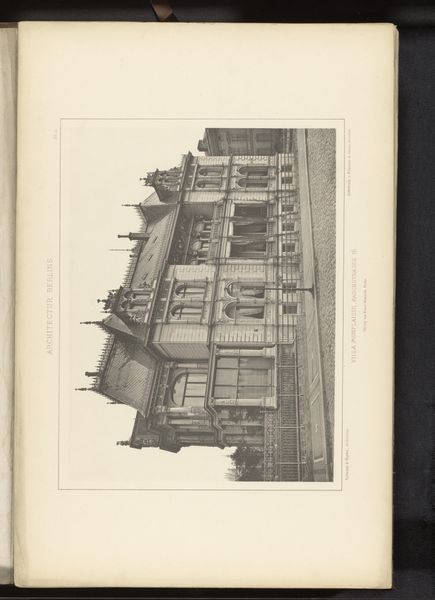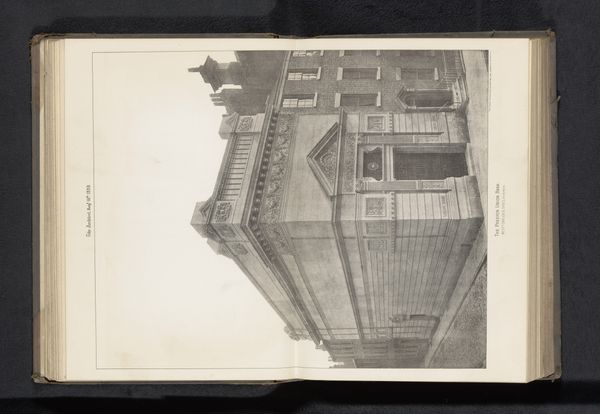
Gezicht op de noordelijke hoek van de façade van Hotel Merghelynck in Ieper, België before 1894
0:00
0:00
Dimensions: height 214 mm, width 271 mm
Copyright: Rijks Museum: Open Domain
Curator: This photographic print by Hector Heylbroeck, dating from before 1894, presents a view of the northern facade of Hotel Merghelynck in Ieper, Belgium. What strikes you initially? Editor: The sheer rigidity, I suppose. All those precisely ordered windows, marching along. The building seems almost suffocatingly structured; an iron grip of rationalism captured in silver and paper. Curator: It certainly exudes a Neoclassical formality. Beyond the aesthetic, it speaks to the rise of industrial precision and the commodification of space in late 19th-century urban life. Consider the glass used for all of those matching window panes! Editor: Yes, the very manufacture of those standardized architectural elements required shifts in industrial production. Heylbroeck’s photograph itself is a product of that era's burgeoning material culture. Curator: Precisely. It also hints at the city's self-image, perhaps reflecting civic pride in the ordered beauty, despite social stratification hinted at in the streetscape. Editor: Or masking those fractures with a carefully composed surface, which photography does so well. Heylbroeck shows us the stones and glass of the Hotel Merghelynck as if he intends to put them up for display. I want to think of the human labor that went into crafting this edifice and sustaining it through time. Curator: And, perhaps, obscuring it too. Heylbroeck's choices reflect a particular worldview, freezing a moment in time and solidifying the building's presence through this print, imbuing it with layers of meaning related to power and history. Editor: And even decay! Look closely; it feels the artist tried, though in vain, to obscure a sense of fading; an illusion to give some life to it! The materials used by the architecture stand up for decades but their arrangement has turned cold and even tragic. Curator: A chilling note to end on! The artwork reveals how the past, even when seemingly frozen, constantly shifts our present. Editor: Indeed, it is a moment of considering urban life and materials intersecting in a particular, bygone space.
Comments
No comments
Be the first to comment and join the conversation on the ultimate creative platform.
